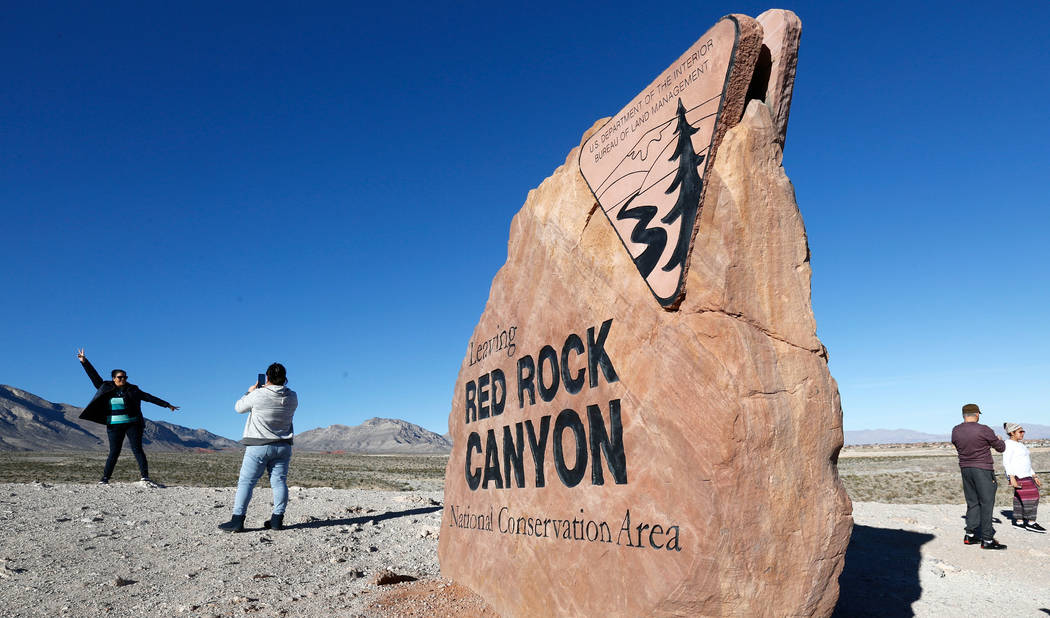Regional leaders vie for large-scale expansion
The Southern Nevada area could see major growth in the coming years.
Mike Mixer, 2018 president of NAIOP Southern Nevada, Commercial Real Estate Development Association, a leading organization for the commercial real estate industry in the Las Vegas Valley, spoke about his thoughts on the potential expansion onto new land currently held by the U.S. Bureau of Land Management and on other lands.
Clark County commissioners approved a resolution in June to call on Nevada’s congressional delegation to draft federal legislation that would increase the amount of developable land in the Southern Nevada area. Commissioners called on the delegation to open over 44,000 acres of public land to future commercial and residential projects.
The majority of those proposed acres sit south of the valley, along the Interstate 15 Corridor. The plan also calls for land adjacent to Red Rock Canyon National Conservation Area to be opened for development.
County commissioners approved a second resolution in June that supports “smart growth planning strategies” on lands the county is looking to open to development near Red Rock. The strategies were designed to protect the conservation area.
Nearly 83,000 acres of new wilderness would be designated by Congress under the proposed plan by Clark County. The plan also calls for nearly 292,000 acres to be designated as new areas of environmental concern in Clark County, which would put the county in compliance with the Endangered Species Act that protects several species, including the desert tortoise.
NAIOP Southern Nevada is in support of the resolution.
“We think it provides solid preservation. There’s a lot more acres that are coming out of the U.S. Bureau of Land Management that will be preserved in various different ways in terms of tortoise habitat, environmentally-sensitive lands, to do a lot of things that our community needs, besides just development,” Mixer said. “We think it’s a balanced approach.”
Some environmentalists and off-road racers have spoken out against the resolution. The county had been developing the resolution since about the middle of 2017, gaining input by meeting with several stakeholder groups, before releasing the proposal to the public in June.
Mixer, who sees any plan to open new public land to development occurring over decades, explained the positives that adding additional developable acres would bring to the local market.
“I think, just under commercial real estate, combined with residential real estate, you’ve got to have places for folks to live; keep having more land available for homebuilders will keep prices down; because, you know, the less land we have, the more the price goes up, and that’s starting to increase the cost of each home, and make us kind of uncompetitive. Businesses might not want to come here if their employees, their cost of living is too high, so it’s all kind of interrelated.”
Mixer went on to say that “the more land we have, we can share it with industrial developers, and office developers, retail, residential, kind of a balanced approach to what the community needs. I think that’s a smart way to go for the future of Las Vegas.”
The new acres could help Las Vegas compete with other western cities.
“We’re really at a disadvantage, competitive-wise, to our neighboring competitive cities because we don’t have a lot of large land holdings to choose from, so that could really open up our ability to stay competitive in the western U.S.,” Mixer said.
Nevada’s senators are open to working with county leaders and others in the process.
“When a local government passes a resolution in support of improving land management and promoting economic development, I have always been willing to work with the state, counties, cities, general improvement districts and numerous stakeholder groups to achieve that goal. The development of any legislation, however, has consistently been the product of a thorough, public process that includes local input, public meetings, support from local officials and extensive outreach to the residents who live in the communities that would be impacted by the bill,” said U.S. Sen. Dean Heller, R-Nev., in a written statement.
Heller went on to state that “since approximately 85 percent of Nevada’s lands are managed by the federal government, it is critical that we collaborate at all levels of government to provide the state with the tools it needs to encourage economic opportunities and increase affordable housing options, I will continue working with Clark County and stakeholder groups to introduce legislation that will do just that.”
In a written statement earlier this year, Catherine Cortez Masto, D-Nev., said, “these resolutions are an important first step in addressing Clark County’s needs as its population continues to grow.”
“I look forward to working with the commission, members of our congressional delegation, and stakeholders across Nevada to develop balanced federal legislation that meets the county’s needs, prioritizes smart growth and invests in conservation,” Cortez Masto said.
Ivanpah Valley Airport
Clark County commissioners voted in September to have an environmental impact study move forward on building a supplemental airport in Ivanpah Valley, which sits between Jean and Primm, on roughly 6,000 acres of land about 32 miles south of Las Vegas. That study will be overseen by the Federal Aviation Administration and the U.S. Bureau of Land Management and is approximated to be completed within the next two years.
No timeline was given during the meeting on when the airport could be built.
The roughly 6,000 acres in Ivanpah Valley was purchased by Clark County through federal legislation known as the Ivanpah Valley Airport Public Lands Transfer Act of 2000. An additional 17,000 acres surrounding the proposed airport were “designated to become an airport noise compatibility area” through federal legislation known as the Clark County Conservation of Public Land and Natural Resources Act of 2002, according to Chris Jones, chief marketing officer at McCarran International Airport.
“The transfer is predicated on a successful record of decision following an EIS (environmental impact statement) administered by the FAA (Federal Aviation Administration) and BLM,” Jones said in an email.
A version of this story was first published in the Las Vegas Business Press on Sept. 25, 2018.


















